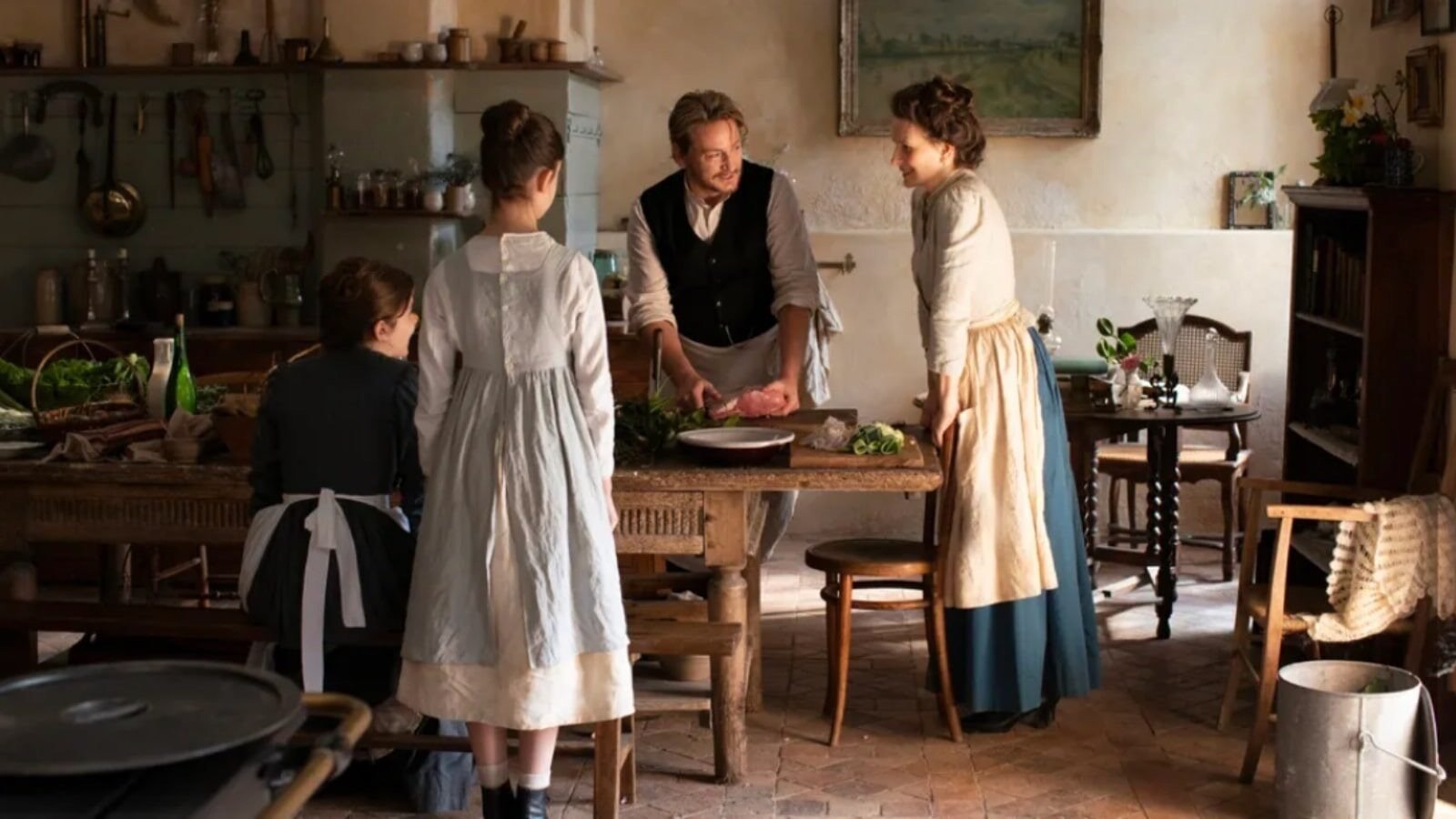Cinema: Two Approaches of the Director
1. To shoot the actors. 2. To shoot Cinema.
Publicity from The Taste of Things (2023) Writer-Director Trần Anh Hùng, Cinematography Jonathan Ricquebourg.
Trần Anh Hùng, Writer-Director of The Taste of Things (for which he won the Best Director award at Cannes), France’s entry into the 2024 Academy Awards, in a Q&A after a recent screening of his film, commented that there are two types of director.
The first group, he says, shoots the actors. They film performances then cut the resulting shots together. They cover the actors’ actions, dialogue, flow of emotion and then choose from these what they wish their audience to see at any given moment.
I know this approach well. Working in production at the BBC TV studios in London after coming out of university, I saw the “simply point the camera at the actor” method.
Four or five cameras would be lined up across the front of a set. A “vision mixer” would sit up in the “gallery” while the director, perched next to them would call out the shots and instant cuts. The scene would have been rehearsed extensively in the BBC Rehearsal Rooms in North Acton, between the taped outlines of the sets.
All that remained was for the actors to perform in the actual sets as each scene played out in the studio while the huge , unwieldy video cameras simply recorded their performances on the inadequate analogue videotape of the day.
There was little thought given to the language of the screen.
Movie cameras don’t have to be placed at the front of the set of course. (Hou Hsiou Hsien did this in Flowers of Shanghai however, only to create a film of impenetrable visual tedium — such a contrast to some of his other remarkable work.) A movie camera can be placed anywhere to get any angle on characters and action, should the director so wish.
The editing process is different from that old studio practice too. Not simultaneous. Not instant.
The approach is the same though. The actor is what matters. The recording of their performance for the subsequent recreation of the scene in the edit drives the process.
The next type of director, according to Trần Anh Hùng — and he’s one himself — is the filmmaker who strives for a screen that is cinematic. This is the filmmaker who thinks in terms of the flow of images, not of movies as filmed theatre.
“Cinema”, according to this remarkable Vietnamese-French filmmaker, is the highest of three levels of the director’s movie making:
3. Story. 2. Theme. 1. Cinema.
When 3. and 2. have been established, the director can strive for 1.
Trần talked of the precision he adopts in this final and essential stage. He knows exactly when a shot starts and when it ends, and this is how he shoots. Thus he anticipates his edit in granular detail. In this, he says, he draws inspiration from John Ford who would hold up his hand in front of the lens, moving it away only as he called “Action”, holding it up again as he called “Cut!”
Ford, of course, was working at a time when directors had very much less say in the editing of their movies. He was ensuring that his film would come out as the one he intended to make. Trần’s circumstances are different although this he didn’t mention. But for him certainly, this philosophy works to dazzling effect.
I wouldn’t recommend filmmakers in general be so dogmatic however! The master Krzystof Kieslowski would take footage from anywhere, from before “Action” had been called, from after he had cut, from anywhere the camera had happened to be rolling.
And what’s wrong with the filmmaker giving themselves several options,allowing leeway in when a cut is made in the edit, and enabling flexibility in the modulation of rhythm?
Perhaps then, not all directors need be solely in Trần’s purist tribe, admirable as that might be? Cinematographer Janusz Kaminski has described how Stephen Spielberg will sometimes specify exactly the shot he wants his DP to get while on other occasions will wait to get onto the set to work with the actors and go from there.
Such a master — perhaps America’s most underrated filmmaker — surely has permutations of possible shooting strategies for a scene already in his head before the shoot though. With such consummate grasp of the language of the screen, this director is hardly one to opt for performances patched together.
Nevertheless, this flexible approach is perhaps typical of many directors who neither adhere strictly to the vision of Trần Anh Hùng nor settle for mere coverage.
There are many more ways of categorizing filmmakers. Many more possible polarities. The restrained vs. the flamboyant. The purist vs. the eclectic. The vulnerable vs. the predatory. The “sacred” vs. the “profane”. Those who conceive every detail early on vs. those who practice patient evolution… The montage vs. the long take exponents. The visual storyteller vs, the visual “grammaticist”. Plus other opposites…
My point is that Trần Anh Hùng posits a declarative philosophy that— whether we agree with him or not—prompts us to reflect. His championing of what he calls precision is, whatever the filmmaker’s individual process, a call for rigor and comprehensive connection to, and engagement with, their material. And these are virtues that may be manifested in so any ways…
So filmmakers might do well to listen.
Peter Markham December 2023
